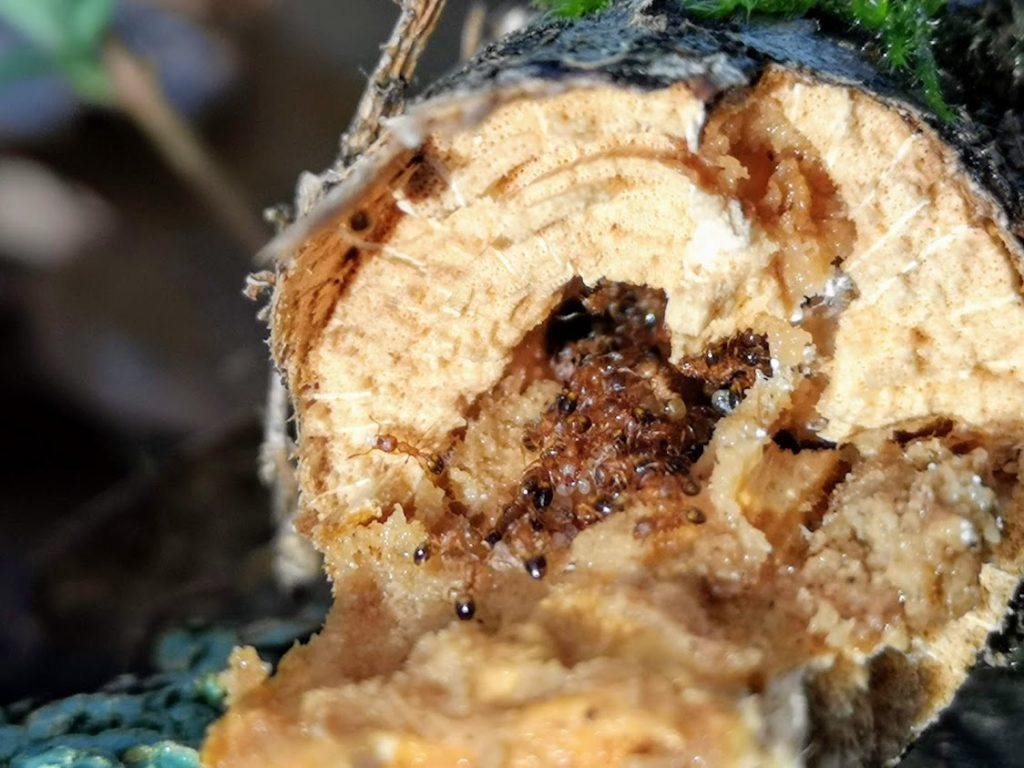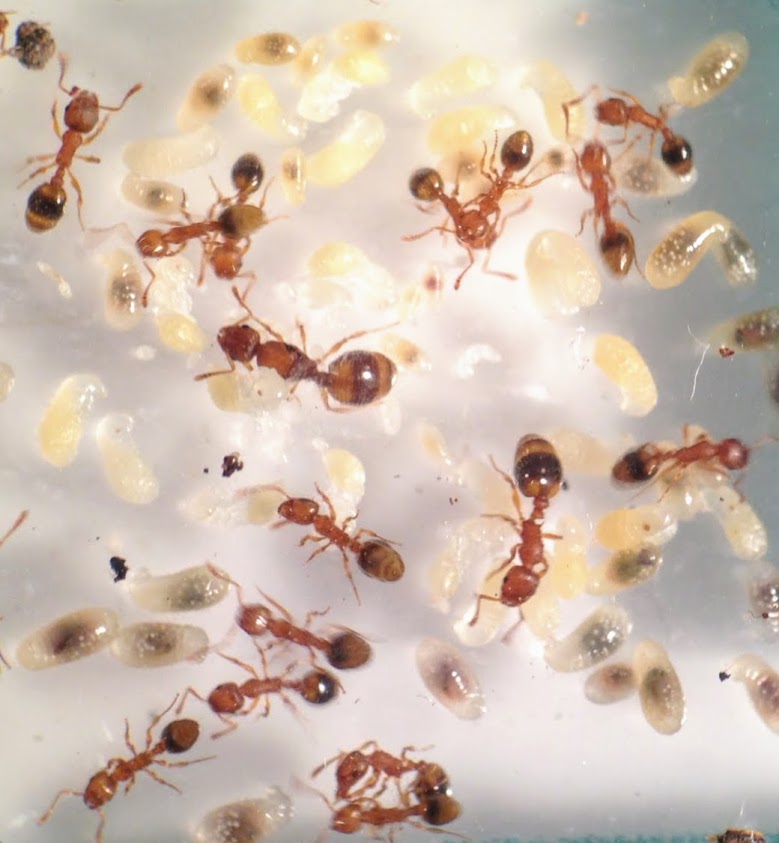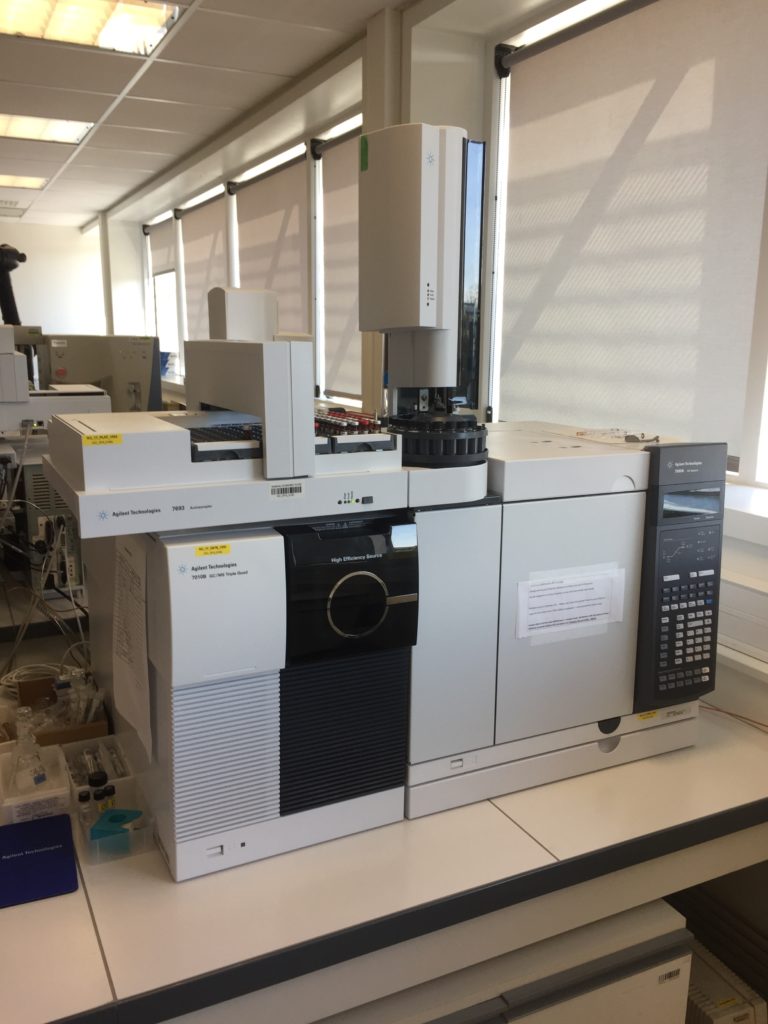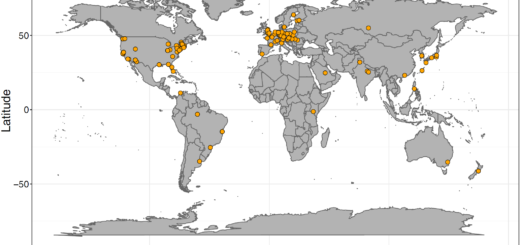Ants to monitor pollution
Lauren Jacquier is a PhD student at the Sorbonne Université in Paris and is supervised by Mathieu Molet. In her PhD, she and her colleagues work with ants, and one of their projects focuses on organic pollutants including phthalate, a xenobiotic used as a plasticizer. They want to determine whether such xenobiotics are present in Paris and its surroundings. Here, Lauren gives us some background information and shares some first results.
A View by Lauren Jacquier and Mathieu Molet
This text describes an ongoing work by Lauren Jacquier*, Arthur David°, Fabien Mercier°, Romain Péronnet*, and Mathieu Molet*
* Institute of Ecology and Environmental Sciences, Sorbonne Université, Paris, France
° Laboratoire d’Etude et de Recherche en Environnement et Santé, Ecole des Hautes Etudes en Santé Publique, Rennes, France
The contamination of the global environment by xenobiotics such as phthalates, widely used as plasticizers and recognized endocrine disruptors, is becoming a major issue for human health and for the ecology of many species. As ants are present in all terrestrial habitats except in the Artic, and because their hydrophobic cuticle traps non-polar organic pollutants, they are good indicators to monitor and compare phthalate pollution among different locations. Additionally, workers forage locally at a short-range, allowing for fine-scale analyses of pollution. In 2016, Lenoir et al. sampled different ant species in French Guyana (Lenoir et al. 2016). Unexpectedly, they found that environmental contamination by phthalates also occurred in remote environments such as the Amazonian rainforest, which was once considered as isolated from human disturbances. Moreover, contamination levels greatly varied along urban-forest gradients, with higher pollution levels associated with higher human presence and activities, for example, cities and roadsides.
These interesting results lead us to use ants to monitor environmental contamination by a wide range of organic pollutants including phthalates at a fine scale in the Paris region. Specifically, we aimed at quantifying contamination by these organic pollutants along an urban-forest gradient, by using a common and ubiquitous Western European species: the tiny acorn ant Temnothorax nylanderi. We collected ants from different parks in Paris and in the surrounding woods and forests up to 50 km away. As those ants are quite small, we pooled several individuals from each colony. Pollutant residues on cuticle will be determined using gas chromatography coupled with tandem mass spectrometry (triple quadripole) with a multi-residue method including pollutants such as phthalates, polychlorinated biphenyls, polycyclic aromatic hydrocarbons, and flame retardants.
Analyses are currently ongoing. We are interested in whether we find the same results as Lenoir et al. (2016), for example, contamination by phthalate in all samples. We also aim to determine if we can observe a gradient of pollutant contaminations from forests to urban parks. We already showed that urban colonies are more resistant to pollution than forest colonies (Jacquier et al., under review). This study could link resistance to pollution with higher pollutant exposure in urban colonies. We could also find differences among parks depending on management methods. Temnothorax ants could help monitor pollution levels at fine scales and may be a powerful biological model to easily perform standardized comparative studies across all Western European environments.
References
Lenoir, A., Boulay, R., Dejean, A., Touchard, A. & Cuvillier-Hot, V. 2016: Phthalate Pollution in an Amazonian Rainforest. – Environmental Science and Pollution Research 23: 16865-72. https://doi.org/10.1007/s11356-016-7141-z.
Jacquier, L., Doums, C., Four-Chaboussant, A., Peronnet, R., Tirard, C. & Molet, M. (under review). Urban colonies are more resistant to a trace metal than their forest counterparts in the ant Temnothorax nylanderi











Recent Comments